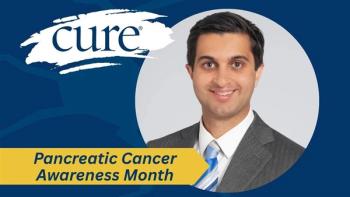
Does CYP2D6 Predict Who Benefits From Tamoxifen?
An enzyme called CYP2D6 converts tamoxifen to its active form, and some research has suggested that if the enzyme is blocked, tamoxifen won’t be as effective, thus causing patients to recur sooner than women with normal enzyme activity.
A new study that found “slow metabolizers” of tamoxifen did not have a higher risk of recurrence has spurred further controversy over whether patients who don’t fully metabolize the drug get the full benefit. The analysis, presented Friday at the San Antonio Breast Cancer Symposium, included more than 2,800 women with early-stage, estrogen receptor-positive breast cancer who received tamoxifen after surgery.
An enzyme called CYP2D6 converts tamoxifen to its active form, and some research has suggested that if the enzyme is blocked, tamoxifen won’t be as effective, thus causing patients to recur sooner than women with normal enzyme activity. The potential relationship between CYP2D6 and tamoxifen therapy outcomes is crucial because numerous types of drugs are CYP2D6 inhibitors, effectively making the women who take these drugs slow metabolizers of tamoxifen.
The results, however, may have been impacted by a lack of complete data in a number of key areas, including the type of chemotherapy patients received, when exactly a recurrence occurred, and whether patients were taking other drugs that would have interfered with tamoxifen. A quality control analysis is forthcoming next year, said the study’s lead investigator, Matthew Goetz, MD, of the Mayo Clinic.
Recent studies looking at the interaction between tamoxifen and CYP2D6 have been contradictory. Indeed, a study presented at last year’s meeting reported that in patients treated with tamoxifen, those who were slow metabolizers had a nearly four-fold higher chance of early recurrence compared with high metabolizers. Data from large prospective trials—a study design that looks forward in time as opposed to backward—are needed to clarify whether an association really exists.
Despite these conflicting data, Goetz said during his presentation that he routinely tests CYP2D6 before prescribing tamoxifen. An aromatase inhibitor, another type of hormonal therapy, may be an option for slow metabolizers, although ovarian removal or suppression would be necessary in premenopausal women because aromatase inhibitors work only when the ovaries no longer produce estrogen.
Goetz also noted that he does not prescribe potent CYP2D6 inhibitors, such as the antidepressants Paxil (paroxetine), Prozac (fluoxetine), and Wellbutrin (bupropion), to patients taking tamoxifen. Other drugs that do not inhibit CYP2D6 can be considered for these patients.
This article is a part of CURE’s 2009 San Antonio Breast Cancer Symposium coverage. To read more articles from SABCS 2009, visit





